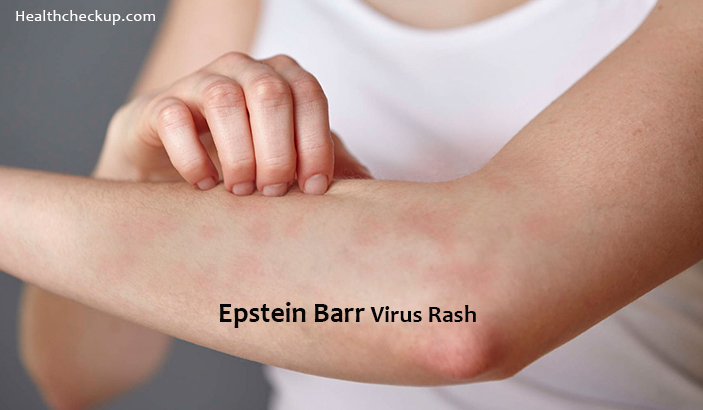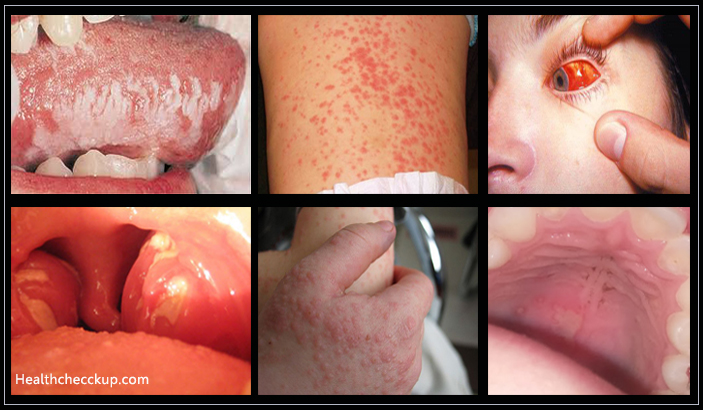The Epstein Barr Virus is a common virus that infects humans. It manifests itself in a number of symptoms. When the virus is showing symptoms, you can pass it to very many people around you. In medicine and medical texts, the full name of the virus is often abbreviated to EBV.
There are two names given to this virus. One is Epstein Barr Virus and the second one is Human Herpesvirus 4. It is in the herpes family of viruses that are known to infect humans. Once the virus infects you, you develop infectious Mononucleosis. A common name for the condition caused by this virus is the ‘Kissing Disease’. This is because the virus is easily spread via kissing.
Can Epstein Barr Virus Cause a rash?
Infection by the Epstein Barr Virus can cause a rash. The rash is more pronounced on light skinned people. However, not all rashes you get on your skin are caused by Epstein Barr Virus. If you have a rash, it is best to get it examined by a professional healthcare provider.
Epstein Barr Virus Rash Symptoms
Symptoms of infection with the Epstein Barr Virus can take some time before showing. Usually, between 4 and 6 weeks will have lapsed. In young children, the symptoms are mild and mimic flu symptoms. It is in adults and teenagers that more obvious symptoms of EBV are seen. They include
- Fatigue accompanied by a lack of appetite
- Rash – This is a more specific symptom. The Epstein Barr Virus skin rash causes itching. It is often referred to as the Epstein Barr Virus itchy rash.
- Fever
- Sore throat, Sore muscles and general body weakness
- Swollen glands in the neck
Symptoms of EBV infection disappear within 2 weeks. Fatigue is usually the last to clear. It could stick around for a little longer than 2 weeks.
Epstein Barr Virus pathogenesis follows a cycle of infection and dormancy. In this cycle, the stage where the virus is active and causing symptoms is called Mononucleosis. Once infected, the virus can remain inactive in your body for a very long time. During this time, it does not show symptoms but you can transmit it to someone else.
Epstein Barr Virus Rash Causes
You will easily feel the rash on your skin and see it if you are light-skinned. A rash caused by the Epstein Barr Virus changes the texture of your skin. It can spread over a wide area or a small one. The rash is caused by the EBV causing an immune response. It will have infected some new cells in its pathogenesis cycle. EBV preys on B.
The virus is found in body fluids and can survive on some surfaces for considerable periods of time. Kissing, sharing a cup, blood transfusion and organ transplants can all result in transmission of the virus from an infected individual to a healthy one. Since the virus is found in semen, sex is also a means of transmitting EBV from one person to another.
Epstein Barr Virus Rash Treatment
Treatment for Epstein Barr Virus rash will require you to get plenty of rest. If you are not able to achieve this, your next best bet to fighting the virus is staying well hydrated.
- Lozenges and ice pops are a great often overlooked method of getting some relief from the overall symptoms of an EBV.
- Your doctor will recommend other medication if it is necessary.
- Some lotions that relieve itches and restore the smoothness of your skin are a great treatment for the EBV rash.
Pain relievers can also be prescribed as part of treatment for your Epstein Barr Virus rash.
Epstein Barr Virus Rash Pictures
Diagnosis should not be done using these pictures. It should be a health care provider. Ask a doctor to look at the rash and advice you accordingly. The medical practitioner you visit might need further tests to ascertain that what you have is an Epstein Barr Virus rash.
The EBV rash lasts for some days and then clears. If a rash you suspected was an EBV rash does not clear after more than 2 weeks alongside its accompanying symptoms, make sure to visit your doctor.
Medically Reviewed By

Professionally, a trained Microbiologist and Plant operator, Eustace is an experienced health content writer who is passionate about helping people lead a healthy life.









